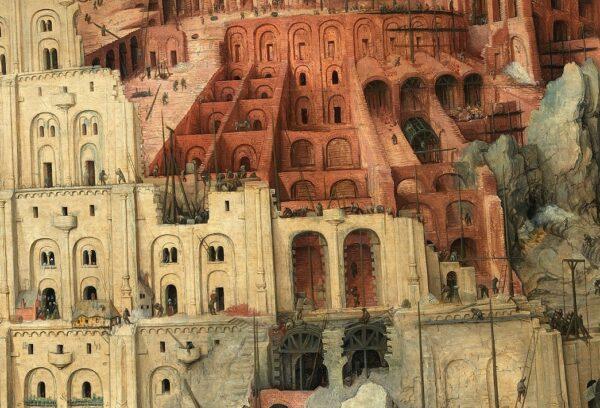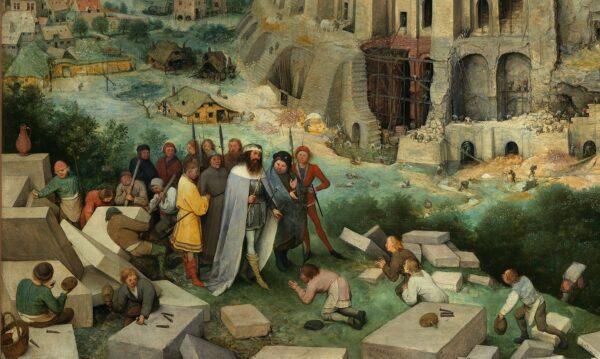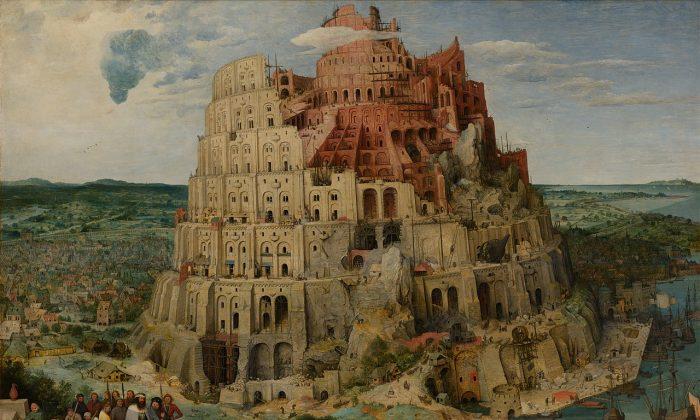I always think about what it means to be a good person, and I often ask myself what mindsets prevent us from being authentically good people. Pride is always a mindset that comes up.
Even our good deeds are sometimes fueled by a desire to show off. We behave “righteously” not on principle but for the praise of our peers; we act not for others but to sustain our pride.
A classic example of pride and hubris is the story of the Tower of Babel.
The Tower of Babel
The story of the Tower of Babel is referenced in the book of Genesis and in the “Aggadah,” the classical rabbinic literature of Judaism. These books tell of a time when people were unified under one language and settled on the plains of Babylonia.The Babylonians were led by Nimrod, a fearless and mighty conqueror, who made his people rebel against God. He wanted to build a city with a tower that reached heaven and served as a place of idol worship. The Babylonians wanted to make a name for themselves and stay unified and strong.
God came down to witness the building of the tower and concluded that nothing the Babylonians planned would be impossible for them if they remained unified under one language. So God decided to confuse their language and spread the people around the world. The building of the tower ceased.
Pieter Bruegel’s Great Tower of Babel
Pieter Bruegel the Elder (1525–1569) was a Netherlandish artist of the Northern Renaissance during the 16th century. He was greatly influenced by the Northern Renaissance painter Hieronymus Bosch and created fantastical, multifigural compositions with large landscapes.In 1563, Bruegel painted “The Tower of Babel,” one of his two representations of the tower; it is now located in Vienna.
The first thing we see is the tower. It’s in mid-construction, and the soft yellows of its outer walls contrast well with the dark reds of its inner chambers as it stretches from its beginnings on earth, past the horizon line, and into the heavens.

Bruegel painted hundreds of small figures helping to build the tower. They are all working together and scurrying about to complete the task.
All around the tower is the rest of the city. Bruegel has shown the contrast in size between the everyday person’s dwelling and the enormity of the tower.
Our eyes are then led from the landscape down to the bottom left of the composition, where there is a row of dark bushes. In front of these bushes is a group of figures—our secondary focal point—one of which appears to be Nimrod.
Nimrod is dressed like a king, wearing a cloak on his back and royal crown on his head. Peasants kneel before him, while workers lift and carry large slabs to the building site.

Dispersing Our Pride
The question that immediately strikes me is, why does God disperse these people and confuse their language? We often think that there’s wisdom in working together to complete a grand task, but it seems God thought otherwise in this case.I think one reason might be that man has replaced God with himself. Bruegel depicted Nimrod as the one being worshiped instead of God, and Nimrod, as a mere human being—despite his successes at conquest—is unable to reach the heavens since God thwarts his prideful plans.
I think another reason God disperses these people and confuses their language is because they are attempting, together, to create a heaven on earth, when maybe the journey to heaven is an individual and internal one.
Maybe their attempts are futile since their hearts and minds are not on God. Therefore, God does them a favor by dispersing them and confusing their language. In their new situation, they as individuals can once again turn inwardly toward God.
To me, the tower is a symbol of pride. I see it as a symbolic representation of our tendency to show off to those around us. We find ways, sometimes deceptively, to elevate ourselves above and beyond our peers so that we can be perceived as high and mighty: a false and doomed attempt to reach heaven on earth.
Maybe there’s more wisdom in attempting to reach heaven from within than through pursuits that fuel pride. Maybe we reach heaven not by building up our inner worth through the praise of others but by discarding and dispersing the outward desires and pride that may prevent us from obtaining the inner quietude in which God may speak, and we may hear him.
Art has an incredible ability to point to what can’t be seen so that we may ask “What does this mean for me and for everyone who sees it?” “How has it influenced the past and how might it influence the future?” “What does it suggest about the human experience?” These are some of the questions I explore in my series “Reaching Within: What Traditional Art Offers the Heart.”
Eric Bess is a practicing representational artist.






Friends Read Free